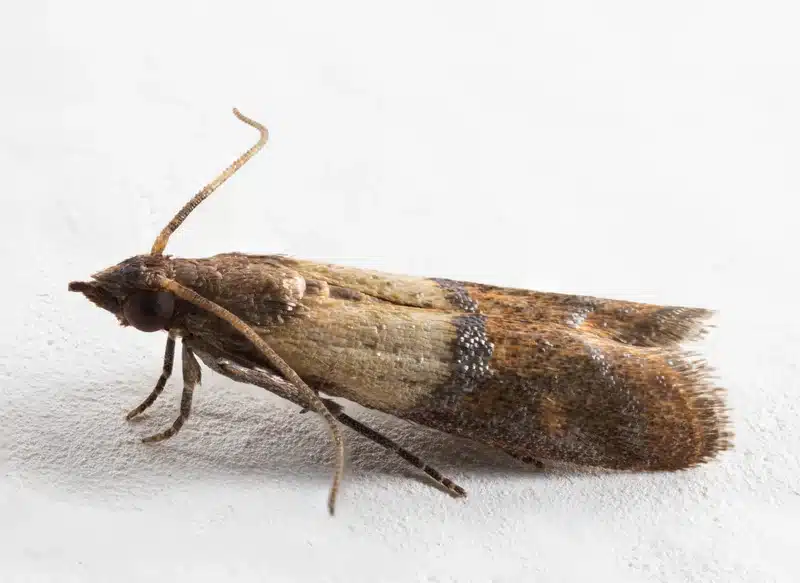Spotting pantry moth eggs early can save your dry goods. I’m a third-gen registered technician with four years in the field. Our family business has served the DMV for over 50 years, and I’ve seen hundreds of infestations. Let’s dive into what these tiny eggs look like and how to deal with them.
Understanding the Pantry Moth Life Cycle
Pantry moths follow four stages:
- Eggs
- Larvae
- Pupae
- Adults
A female can lay 40-350 eggs over 1-3 weeks, according to the Clemson Home & Garden Information Center. Eggs hatch into larvae in about 7 days at 70-80°F, per the Virginia Cooperative Extension. Understanding this cycle helps you catch problems at the egg stage.
Pantry Moth Eggs Pictures: Key Characteristics
Look for these traits:
- Size: 0.3-0.5 mm (about the width of a table-salt grain) entnemdept.ufl.edu
- Color: Pearly white to gray-white, turning translucent before hatching
- Shape: Flattened-oval with a glue-like coating
- Placement: Laid singly or in loose clusters on grains or package seams
Visual Guide: Pantry Moth Eggs
In macro shots of oats or flour, eggs look like tiny dust specs. You might see:
- A single egg stuck to an oatmeal flake
- A small cluster along a jar-lid rim
Where to Spot Pantry Moth Eggs in Your Kitchen
Pantry moth eggs hide in plain sight. Check:
- Dry pet food and birdseed
- Bulk grains from markets
- Jar lids and package seams
For a full removal plan, see How to Get Rid of Pantry Moths: Identifying & Eliminating Them.
Tools for Finding Pantry Moth Eggs Pictures
Use these tools:
- A 10× hand lens and bright flashlight
- Pheromone traps to find active breeding spots
- A smartphone macro lens for up-close shots
Pantry Moth Eggs vs Other Pest Eggs
Pantry Moth Eggs vs Carpet Beetle Eggs
Carpet beetle eggs are rounder and shinier. They don’t cluster on food grains like pantry moth eggs do. Learn more in our Signs of Carpet Beetles: How to Spot an Infestation.
Pantry Moth Eggs vs Rice Weevil Eggs
Rice weevil eggs go inside grains near exit holes. Pantry moth eggs stay on the surface, often in clusters.
Pantry Moth Eggs vs Drugstore Beetle Eggs
Drugstore beetle larvae burrow into packages, leaving exit holes. Pantry moth larvae spin fine webbing as they feed.
Signs of a Pantry Moth Infestation Beyond Eggs
Eggs aren’t the only clue. Watch for:
- Fine webbing and clumped food particles
- Cream-colored larvae wandering on walls
- Adult moths flying in zig-zag bursts
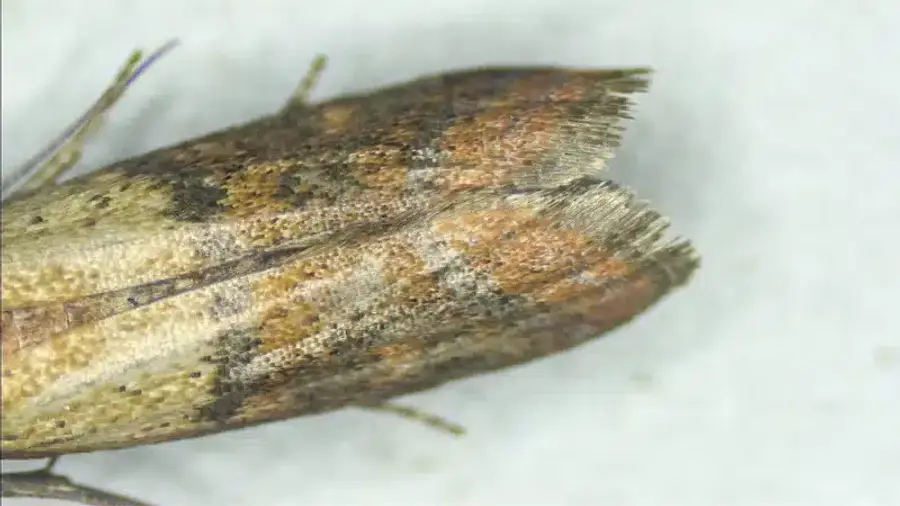
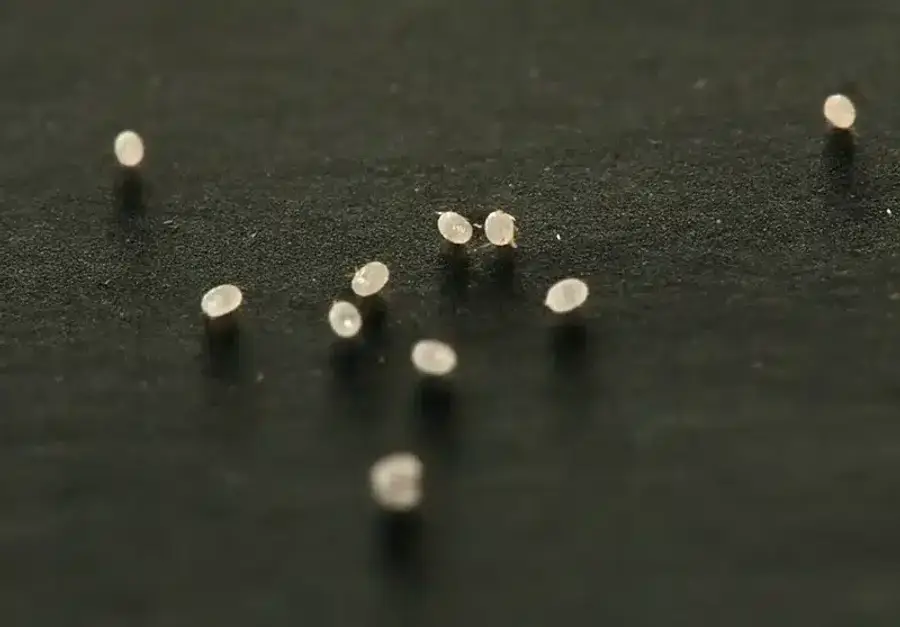
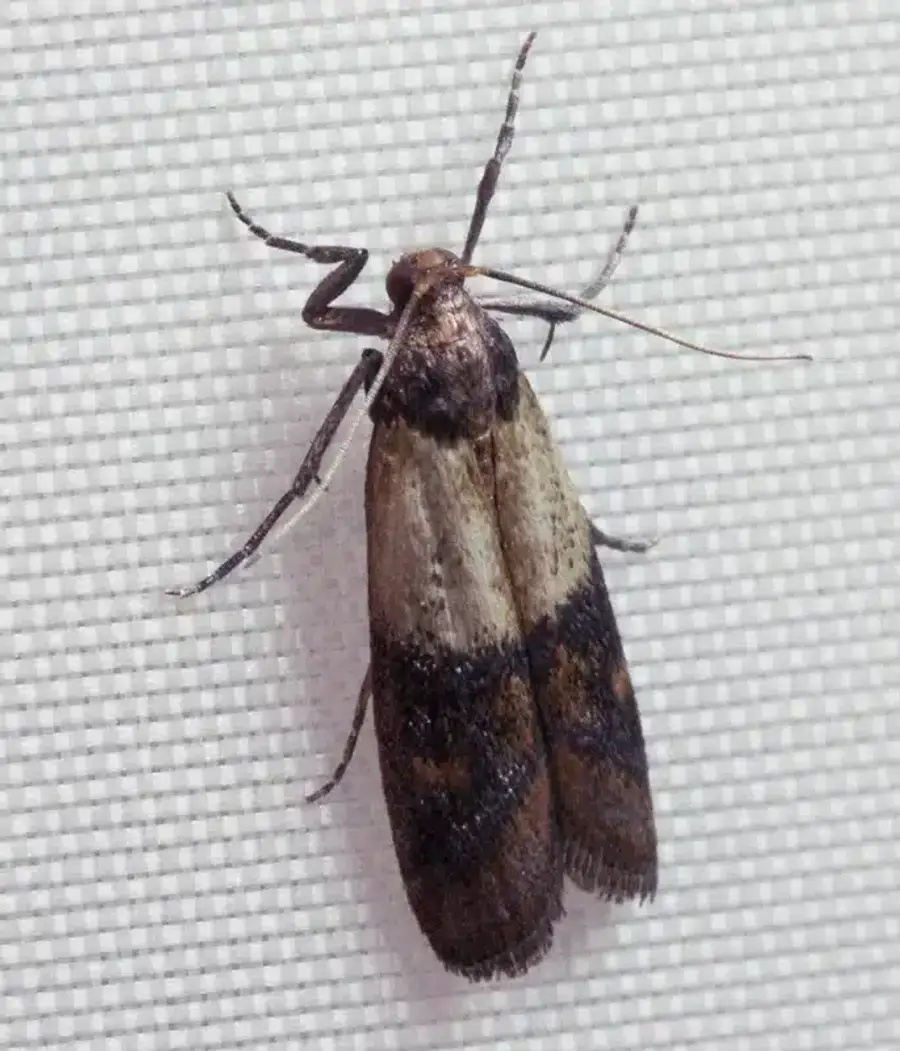

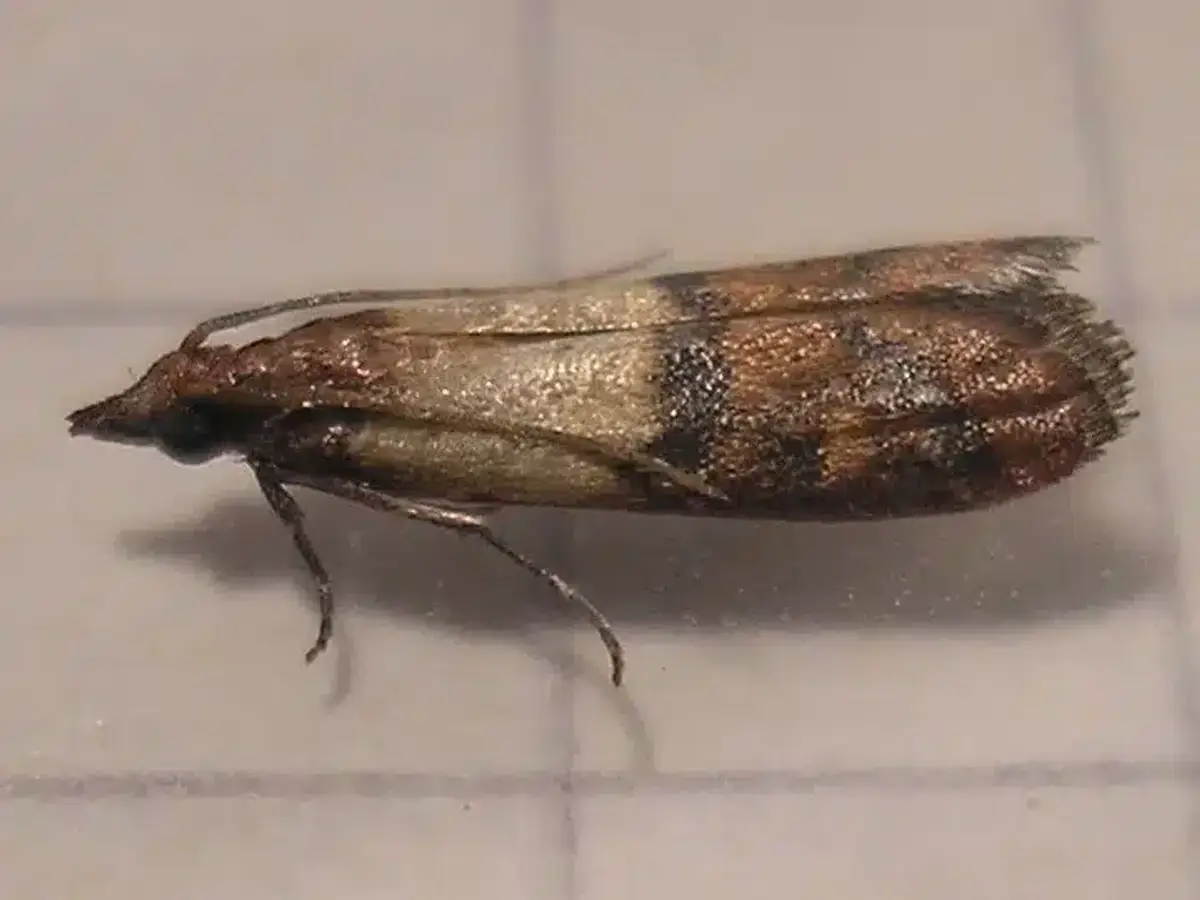
Got another pest? Check Is a Spider a Bug? Clearing Up a Common Confusion.
Regional Considerations: DMV Infestation Pathways
In the Mid-Atlantic:
- Summer humidity above 70% can cut larval growth to three weeks.
- Garages and mudrooms act as “silent incubators” for dry pet food.
- Historic row homes have plaster-lath voids where pupae hide.
How to Treat Pantry Moth Eggs and Infestations
Step 1 - Source Removal & Sanctification
Discard infested items in sealed bags. You can heat-sanitize salvageable foods by heating to 120-140°F for 20 minutes (Colorado State Extension).
Step 2 - Deep Cleaning Cabinets & Shelves
- Vacuum seams, peg holes and under toe kicks
- Wash surfaces with warm, soapy water
- Avoid bleach on raw wood to prevent grain damage
Step 3 - Exclusion & Prevention Measures
- Store dry goods in airtight glass, metal or thick plastic containers
- Practice first-in/first-out rotation
- Freeze new bulk foods at 0°F for 72 hours before storage (UMD Extension)
Step 4 - Chemical Options (Last Resort)
Use crack-and-crevice aerosols only after removing all food and letting surfaces dry. Remember, pheromone traps are for monitoring, not for control.
Preventing Future Pantry Moth Egg Layings
Keep your pantry clear of new eggs by:
- Maintaining humidity below 50%
- Inspecting goods weekly and rotating stock
- Freezing or oven-sanitizing incoming bulk foods
When to Call a Professional
If eggs or larvae return after your initial treatment, it’s time to bring in expert help.
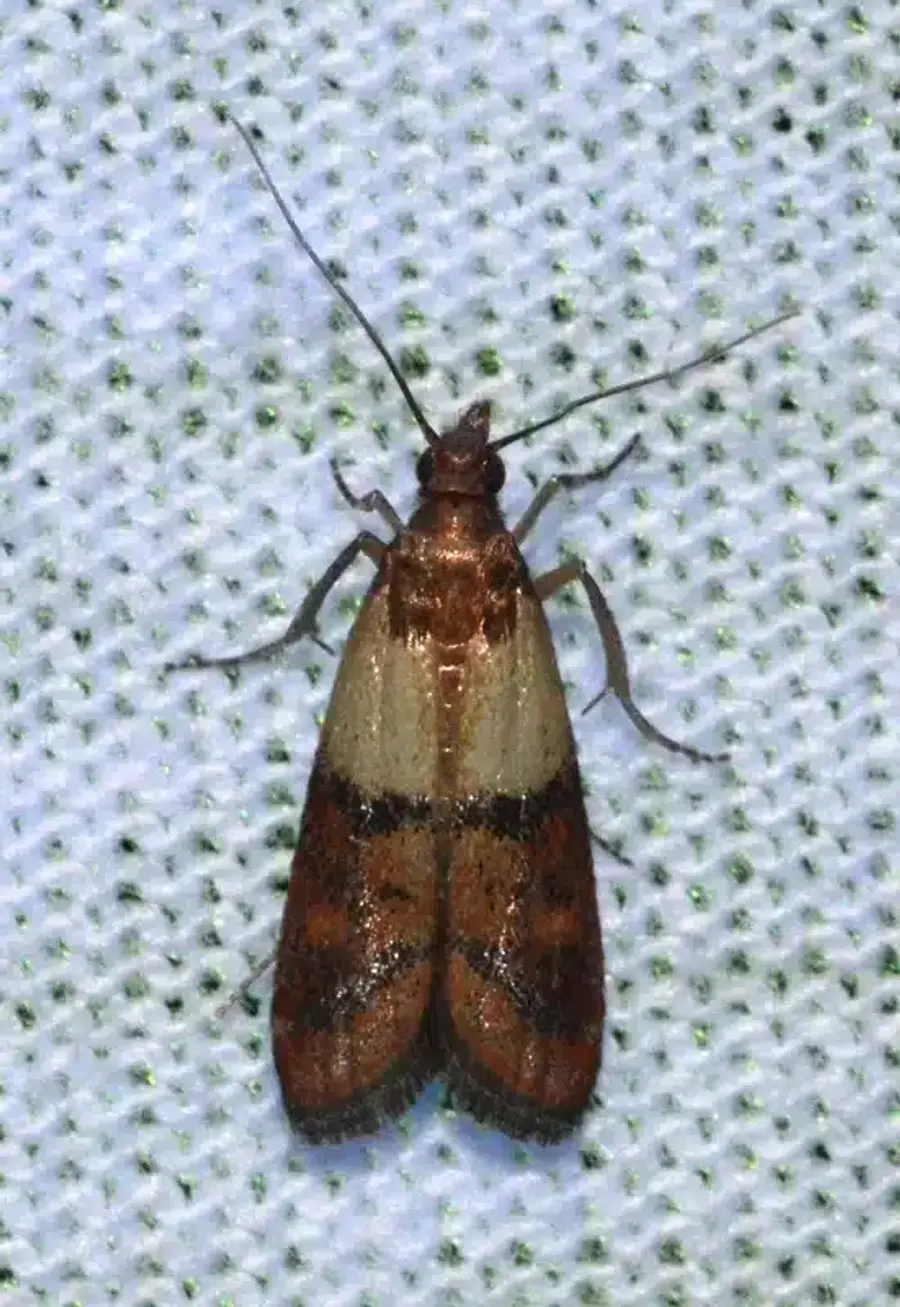

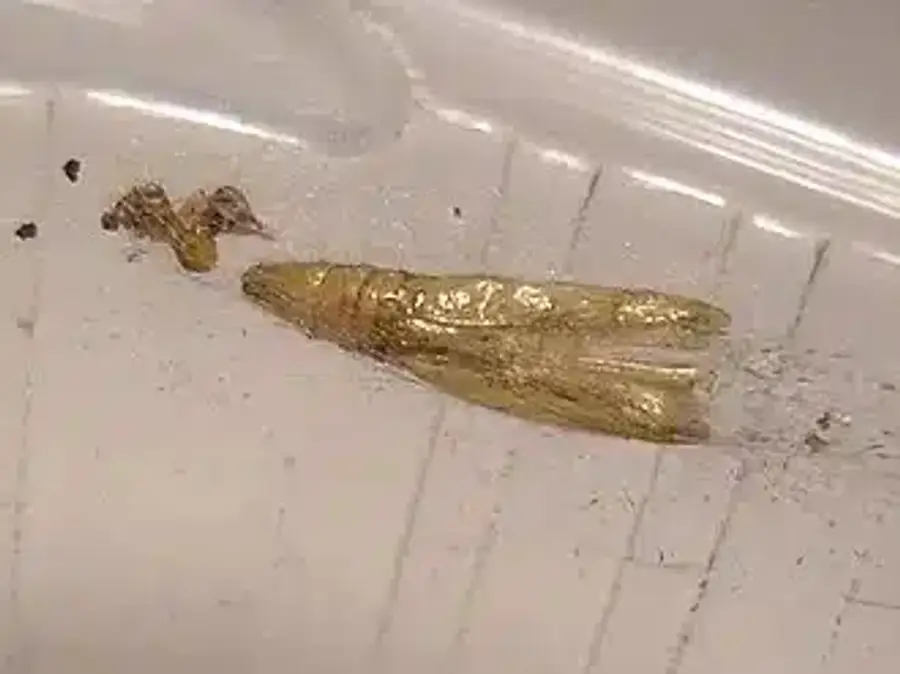
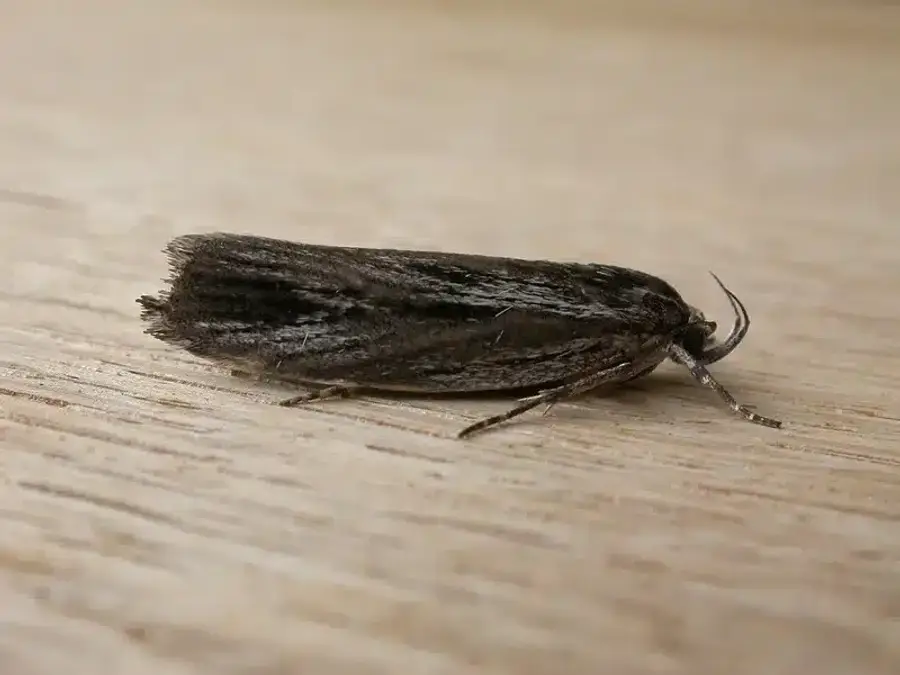
Recommended Internal Links
- How to Get Rid of Pantry Moths: Identifying & Eliminating Them
- Signs of Carpet Beetles: How to Spot an Infestation
- Is a Spider a Bug? Clearing Up a Common Confusion
- Understanding Beetle Larva: Development and Identification
- Ant Identification Chart: Types of Household Pests & Control
- The Ultimate Guide to Rodent Control
- Best Mice Repellent: What Really Works to Keep Them Away
- Northern Virginia Pest Control
- Alexandria Mosquito Control
Frequently Asked Questions
How long do pantry moth eggs take to hatch?
+
Eggs hatch in about seven days at 70-80°F. Higher temps can speed this up to four days.
Can I see pantry moth eggs with the naked eye?
+
At 0.3 mm wide, eggs often look like dust. Use a hand lens and bright light to spot them.
How do you kill pantry moth eggs?
+
Heat at 120-140°F for 20 minutes or freeze at 0°F for 72 hours kills most eggs.
Will pantry moth eggs survive freezer temperatures?
+
Most eggs die after 72 hours at 0°F. A second freeze-thaw cycle ensures total egg death.
Do pantry moth eggs stick to packaging?
+
Yes. A glue-like coating helps them cling to seams, folds and rough surfaces.
Are pantry moth eggs harmful if ingested?
+
Eating a few eggs by accident isn't known to cause illness. Focus on preventing infestations.
What's the best way to monitor egg presence?
+
Set up pheromone traps at eye level in your pantry. Check them weekly for male captures.
Can I use natural repellents to stop laying?
+
No sprays or repellents keep females from laying. Rely on airtight storage and traps.
Should I discard all opened packages when I find eggs?
+
Only toss items with visible webbing, larvae or egg clusters. Freeze others before keeping.
When is a follow-up inspection needed?
+
Check again two weeks after treatment. If you still see larvae, contact a professional. Call us at 703-683-2000 or email info@bettertermite.com with questions or to schedule an estimate.
With five years of hands-on experience in the pest control industry, George Schulz is a registered technician with the Virginia Pest Management Association and a proud third-generation professional in a family business that's been protecting homes for over 57 years. He manages and trains a team of service pros while also leading internal research efforts—recently spearheading a deep-dive review of thousands of documents on pest control materials to hand-pick the most kid and pet friendly, most effective solutions tailored specifically for homes in the DC metro area.
